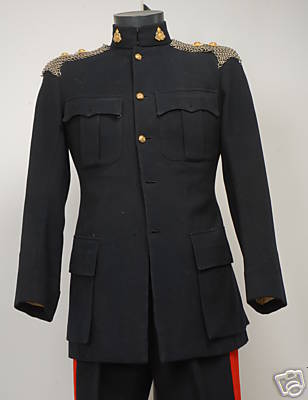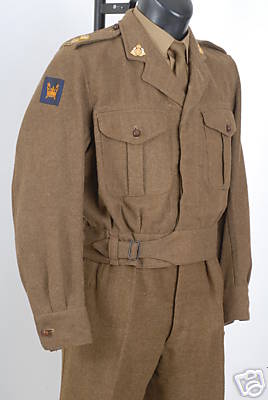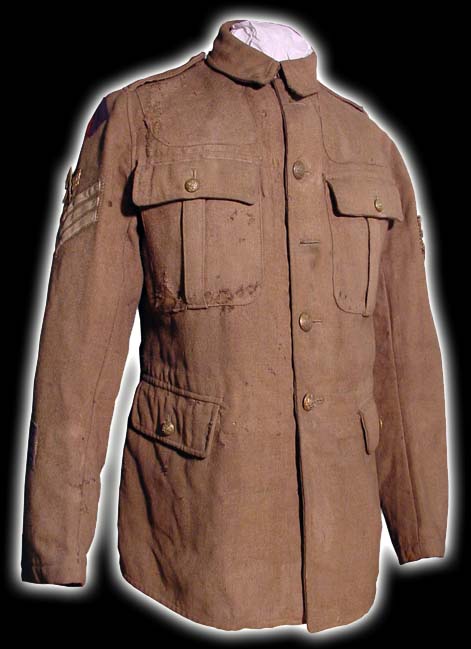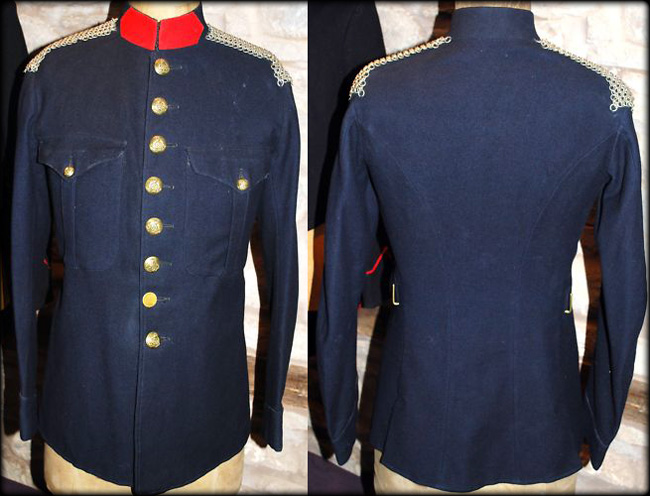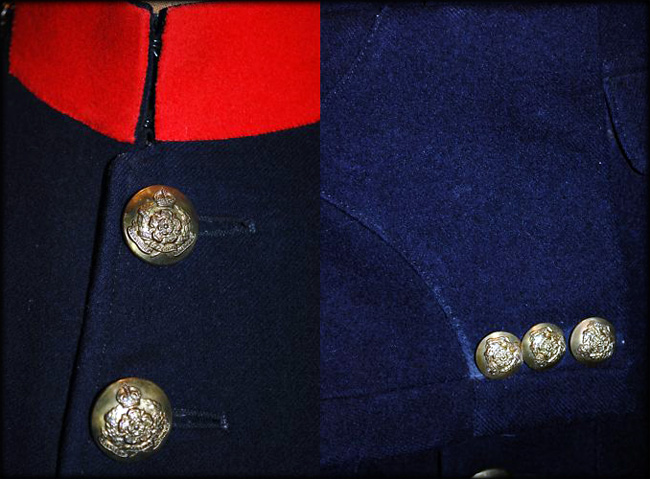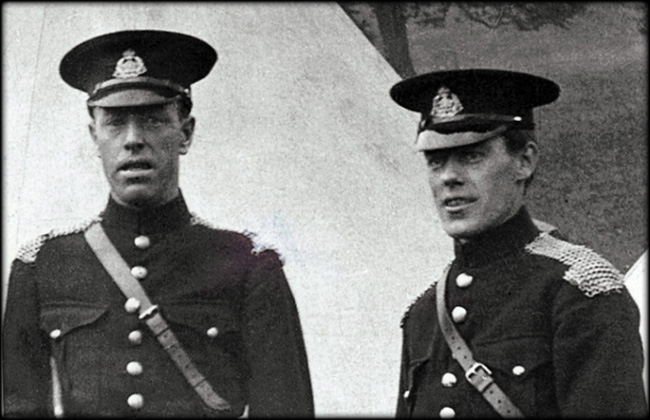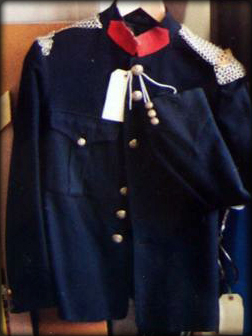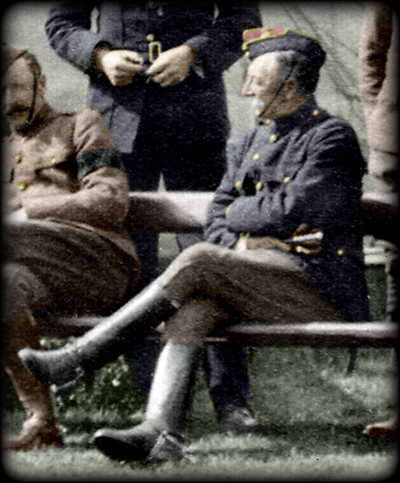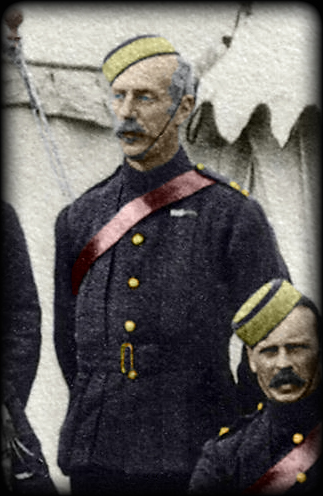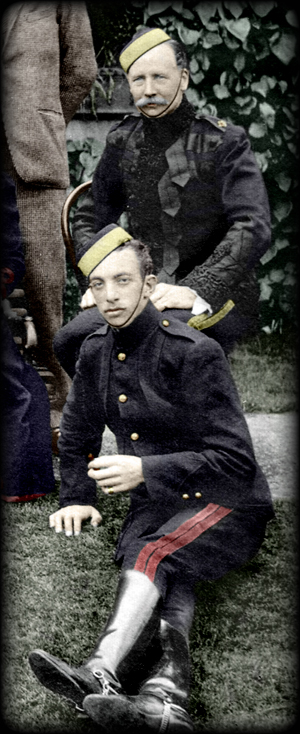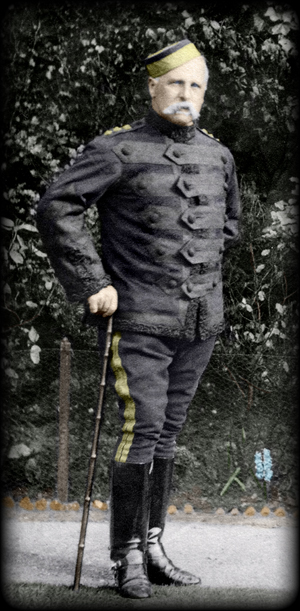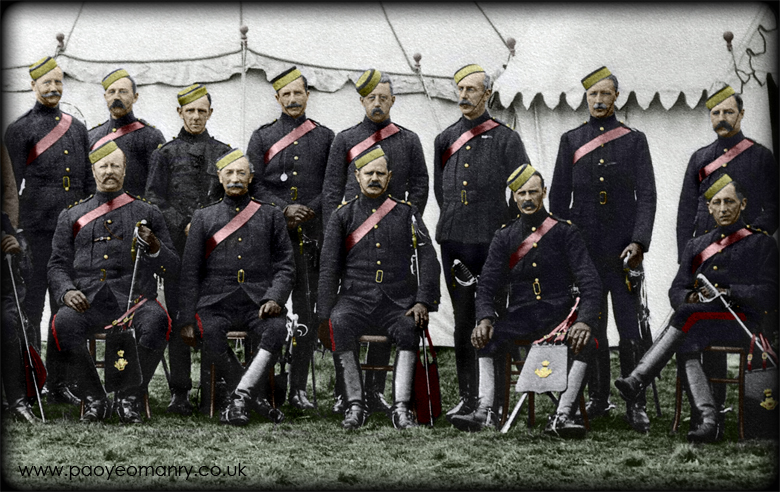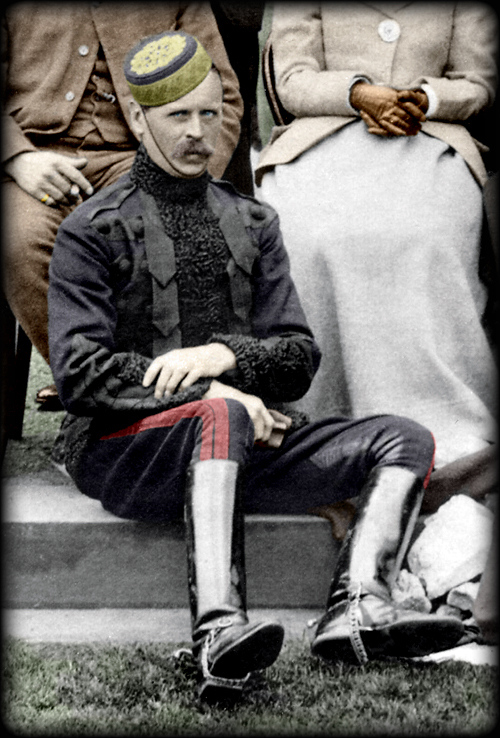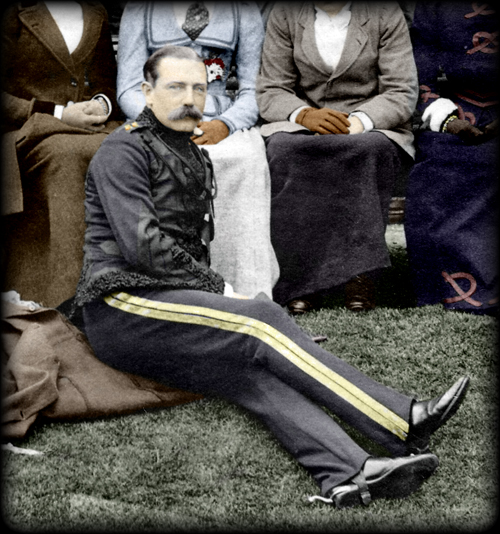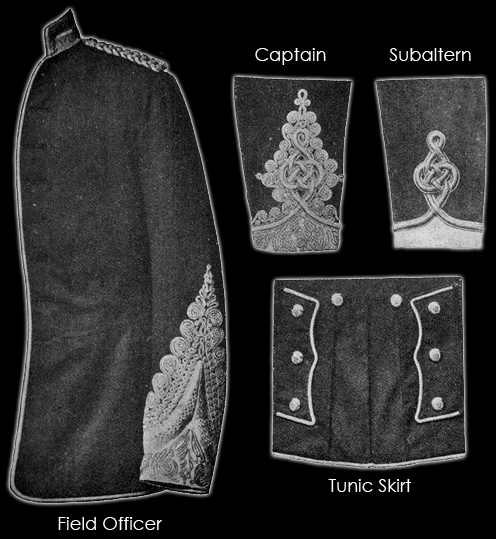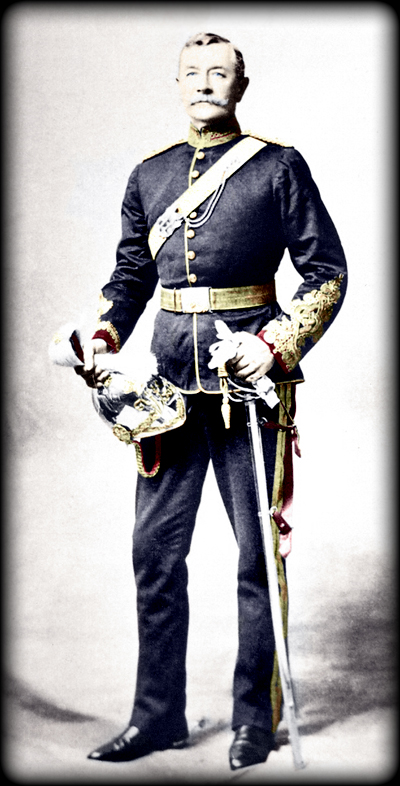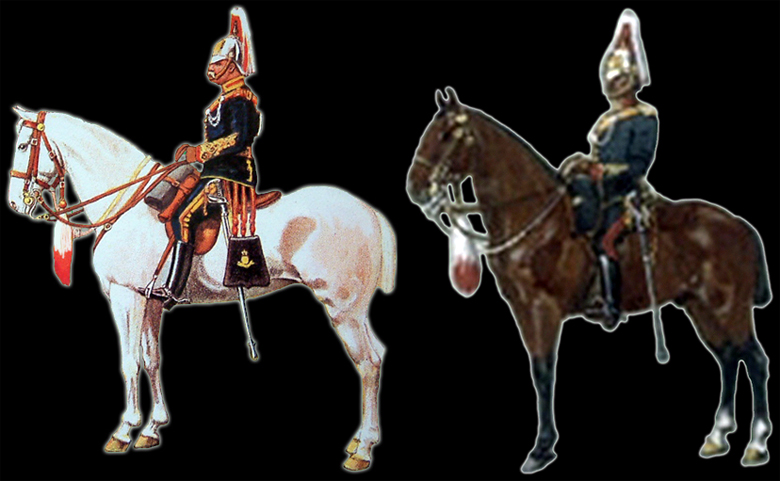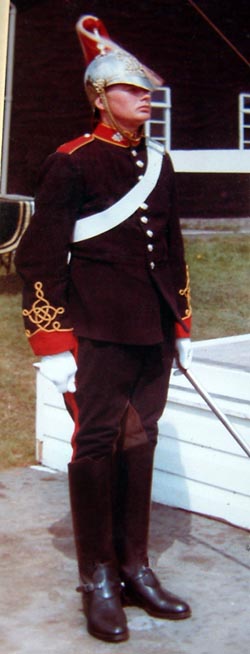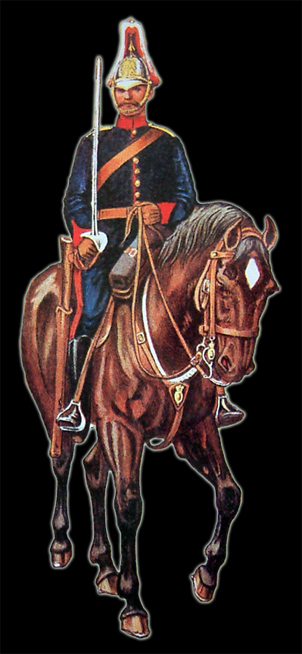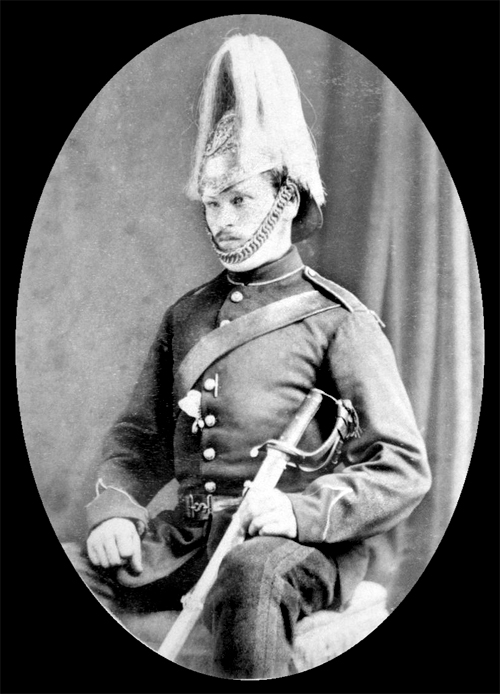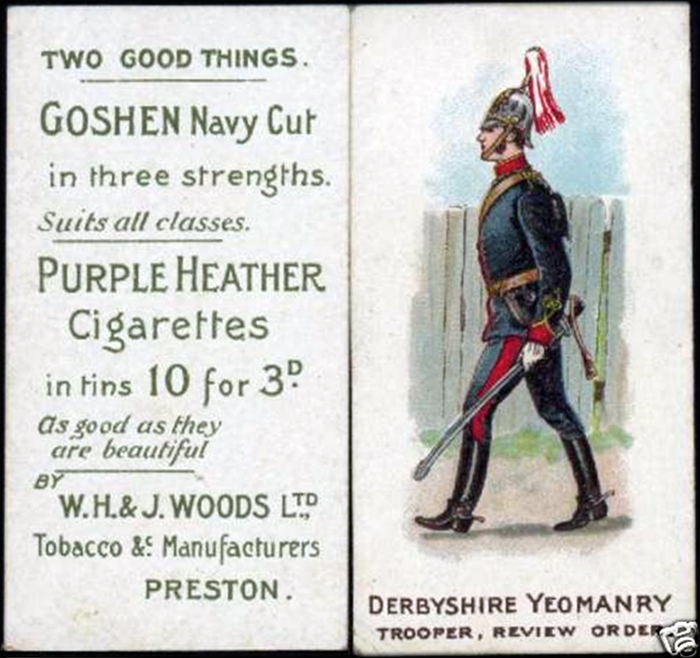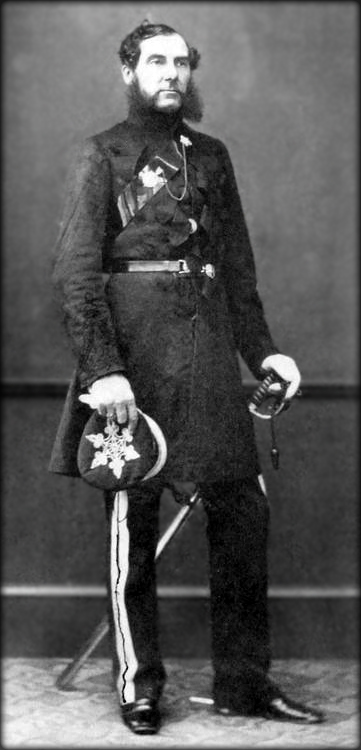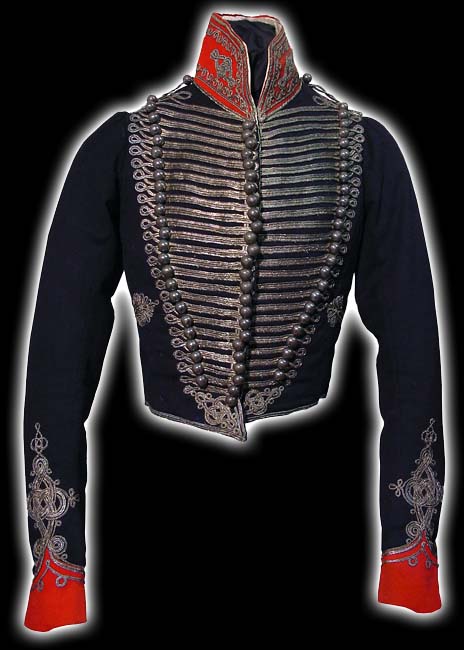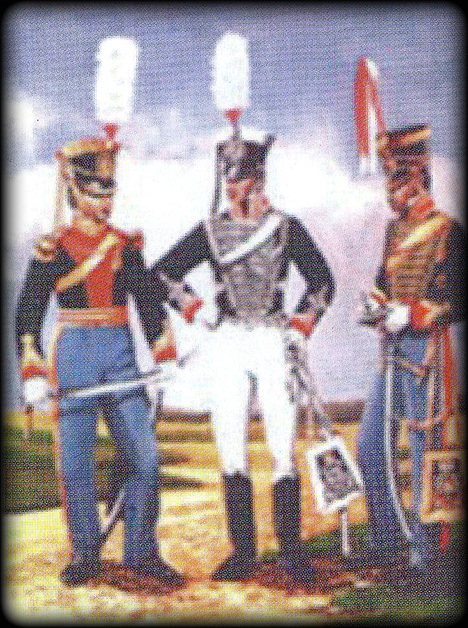 | |||||||||||||||||||||||
|
Uniform
Officer group 1900
The Derbyshire Yeomanry Cavalry also wore a Dragoon pattern
"Astrakhan" patrol jacket (pictured above) from c1884, this stopped for the other
ranks around 1900. The Officers still wore theirs as an
alternative jacket for Mess Dress. Its unclear when this
practice stopped. Astrakhan fur comes from the Persian Black
sheep and is used for its tight warm black fur (often seen on
Russian Cossack hats).
The transition period of the gold lace double stripe to red
stripes on the overalls and breeches can be seen here in c1895.
In this picture of the DYC "Astrakhan"
patrol jacket you can see two detachable cords that hang from
the shoulder button to the opposite top breast button. Quite
what function these items performed, other than display, is
unclear. You can also see the three arm chevrons, in mohair
braid, on the sleeve of the jacket. Some jackets display 3
chevrons and some 2.
It is thought that the DYC officers followed the 6th (Inniskilling)
Dragoon Guards in uniform pattern (as pictured above). The 6th
Dragoons had the Hussar pattern Austrian knot for the junior
officers and the Light Dragoon cuff for the Field officers. The
other "regular" Dragoon Regiments had the more complicated
Dragoon pattern knots on their cuffs (War Office Dress Regs
c1900). The 6th Dragoons Mess Waistcoat was also adopted by the
DYC in 1894.
Sir Peter C Walker, Bart c1902
Wearing the uniform of a DYC Captain.
The officer above is in full dress c 1885, you can see his gold
(oak leaf) leg stripes. His helmet is as described in the above
section for head dress (but with VR cypher). His jacket is edged
with gold Russia braid with scarlet cuff and collar and field
officer rank embroidered in gold. The Jacket tail will have
dragoon pattern button design. The cross belt and sword
belt as seen below. The crossbelt is also
illustrated with a silver pricker plate and boss. The Sabretache
shows a gilt rose with crown. Horse furniture: All leather is
brown with standard yeomanry fittings, the bridle boss might be
of DYC pattern. The bridle plume is white over red horse hair
from a gilt "onion". The officers gloves are short cuff brown
leather (some other Yeomanry Dragoon regiments wore the heavy
cavalry gauntlet). The image to the right shows the later red
double striped breeches.
DYC Trooper circa 1880.
circa 1890, DYC Trooper in Review Order.
An Officer of the Derby & Chaddesden Hussars Troop, in undress
circa 1860.
(Possibly, Captain John G Crompton)
North Derbyshire Yeomanry, Alfreton troop, 1820s This Blue Shell-Jacket is part of the uniform of Captain John
Chambers, of the Alfreton town troop of the Derbyshire Yeomanry. It is
made up of a type of hat called a
shako and a light dragoon style jacket. The braiding and stitching
on the uniform are of solid silver thread. The uniform also includes
buckskin riding breeches, a waistcoat with silver lace and a 1796
pattern light cavalry sword still in use in the 1820s. There was no standardisation of uniform in the 1800s and officers who
could afford it could embellish their jackets with fancy braiding or
epaulettes.
The Derbyshire Fencible Cavalry c1800
Radbourne Troop,
Derby & Chaddesdon Troop, and Repton & Gresley Troop
The above shows the three uniform types of each individual Troop
of the Derbyshire Fencible Cavalry, the first being Lancer and
the other two as Hussars.
| |||||||||||||||||||||||
|
| |||||||||||||||||||||||
